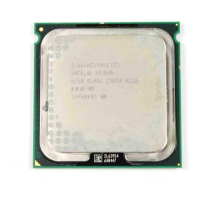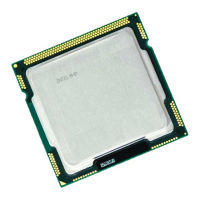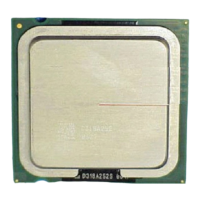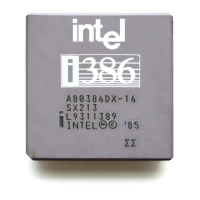Thermal/Mechanical Reference Design
36 Dual-Core Intel® Xeon® Processor 5100 Series Thermal/Mechanical Design Guide
2.4.4.2 Assembly Drawing
The CEK reference thermal solution is designed to extend air-cooling capability through
the use of larger heatsinks with minimal airflow blockage and bypass. CEK retention
solution can allow the use of much heavier heatsink masses compared to the legacy
limits by using a load path directly attached to the chassis pan. The CEK spring on the
secondary side of the baseboard provides the necessary compressive load for the
thermal interface material. The baseboard is intended to be isolated such that the
dynamic loads from the heatsink are transferred to the chassis pan via the stiff screws
and standoffs. This reduces the risk of package pullout and solder-joint failures.
The baseboard mounting holes for the CEK solution are at the same location as the hole
locations used for previous Intel
®
Xeon
®
processor thermal solution. However, CEK
assembly requires 10.16 mm [0.400 in.] large diameter holes to compensate for the
CEK spring embosses.
The CEK solution is designed and optimized for a baseboard thickness range of 1.57 –
2.31 mm [0.062-0.093 in]. While the same CEK spring can be used for this board
thickness range, the heatsink standoff height is different for a 1.57 mm [0.062 in] thick
board than it is for a 2.31 mm [0.093 in] thick board. In the heatsink assembly, the
standoff protrusion from the base of the heatsink needs to be 0.6 mm [0.024 in] longer
for a 2.31 mm [0.093 in] thick board, compared to a 1.57 mm [0.062 in] thick board.
Figure 2-14. Exploded View of CEK Thermal Solution Components

